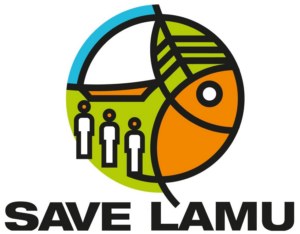By Margot Kiser
Construction for the first three of twenty-one berths of the Lamu Port is slated to begin in November. This may not seem like ground-breaking news, but for a project that’s been in the pipeline since the 1970?s, it’d be one small step for Kenya, one giant leap for Africa.
Yesterday I attended the portion of a two day conference in Nairobi, Kenya, having to do with the Lamu port construction. The conference called “TRIPARTITE and IGAD INVESTMENT CONFERENCE” — Developing Regional Infrastructure in Eastern and Southern Africa — was kicked off at Kenyatta International Conference Center by Kenya’s Pres Mwai Kibaki.
The conference was intended to lure donors, private and public sectors to join the government in investing in the construction of a “land bridge” spanning the Kenya coast to Cameroon on west African coast, and from the interior of Kenya north to Port Sudan in northern Sudan.
The Lamu Port will serve as “the gateway” to this massive land-bridge and to the region-specific Lamu-southern Sudan-Ethiopia corridor a transport corridor (LAPSSET), an infrastructure consisting of a railway, super highway, pipelines to transport crude oil from South Sudan to the Lamu port where it will be refined for export.
Outside the Tsavo ballroom where the conference took place a stall representing the Ministry of Transport featured renditions of what look like plans for a Dubai-sized space-age city.
The ambitious project hopes to be completed by 2030 and requires a total $5.3 billion to build the 21 berths for Panamax vessels and cruise ships, the high speed railway, all weather highways, pipelines, an international airport, refineries on Pate, seven resorts cities, including one on Lamu island, Manda Island, two on Pate island and others toward the south. The size and magnitude of the port city dwarfs the square shape on the legend map designating Lamu as a supposedly protected UNESCO world heritiage site. According to the legend, the[re] will be a resort city within the heritage site.

Lamu Port plans as presented by Ministry of Transport
Businessmen in sharp dark suits snickered when representatives from Lamu town emphasized the urgency of an Environmental Impact Assessment and spoke on behalf of the needs of its citizens whose livelihoods depend on small businesses like fishing and whose indigenous peoples (IDP’s) need to know where they’ll resettle.
Curiously, more time was dedicated to the improvement and expansion of Mombasa’s existing port.
Lamu project manager, Peter Oremo, beamed when a representative from the San Francisco-based Bechtel company (the largest, most successful engineering company in the US) stood to announce interest in partnering with the government to realize the Lamu port. But when Bechtel rep said he wanted reassurances that Kenya would adhere to a time frame for the port’s completion, to which Oremo was fast to reply, “The future is as quick as you want it to be. Tomorrow is today”.
Oremo pointed a hand waving at the back of the room. A gentleman from south Sudan remarked that while plans for oil refineries and an international airport in Juba were fine, indeed, and that the region deserves the fruits of trade expansion etc, he added, “It is important to remember that we in south Sudan don’t even have a functioning road. We will be starting from scratch.”
Questions remain –
– how does Min of Transport justify the construction of first three berths without having first submitted an EIA and making that public? Jambo?
– security against pirates and terrorist attacks?
– will the berths accommodate Navy ships?
– what exactly does the “green zone” mean?
Please, everyone feel free to correct information and add your questions, info and concerns.

Legend of Map 1

